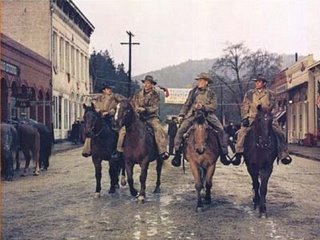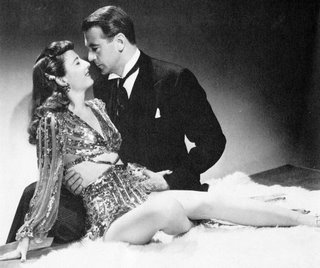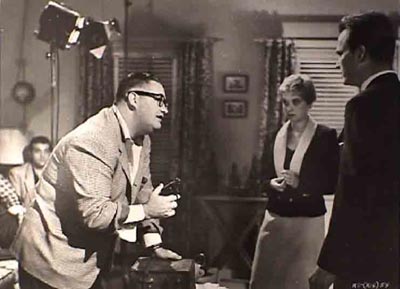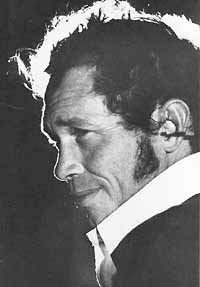
It was during the depths of the Great Depression that bunch of American Jewish youths sat down and created a whole new art form. The art form was the comic book, and the youths had names like Joe Shuster, Jerry Siegel, Bob Kane, and Jack Kirby. This art form flowered under the scepter of European anti-Semetism, and one of the peculiarities of the Golden Age superheroes was that they are without exception powerful Aryan types – Exactly like Hitler wanted to create.
Michael Chabon’s novel plants itself firmly in the middle of this explosion of creative energy. The title characters are the creators of a super-hero called The Escapist, and everything about these two and their hero has the feel of authenticity about it.
Sammy Clay is the imaginative young son of a former vaudeville strongman. His cousin Josef Kavalier is a young Czech who left behind a fledging career as an escape artist and a family at the mercy of the Nazis. Indeed, the approaching war casts a pall over everything, including the comics that leap from the pencil of Joe. Kavalier needs to get his family to America, and throws himself into the artwork in a frenzy. His tales of the Escapist smashing Nazi agents become a hit.
For Joe, the work is just a means to an end – The end being getting his younger brother Thomas out of Czechoslovakia. His fury at Germany finds its way unto the panels of his comics – and also into everyday life.
“On the southbound platform, a few feet from the cousins, stood a dark glowering gentleman – reading the cut of his topcoat, or some indefinable emission radiating from his chin or eyes or haircut, Joe felt certain that he was German. This man was giving them the fish-eye. Even Sammy had to agree afterward that the man had been giving them the fish-eye. He was a German right out of a panel by Joe Kavalier, massive, handsome in a prognathous, lupine way, wearing a beautiful suit. As the wait for the train dragged on, Joe decided that he did not like what he considered to be the superior manner in which the theoretically German man was looking at him. He considered a number of possible styles, in German and in English, of expressing his feelings about the man and his fish-eye. Finally opting for a more universal statement, he spat, as if casually, onto the platform between him and the man. Public spitting was common enough at the time in that city of smokers, and the gesture might have remained safely ambiguous if Joe’s missile had not overshot its mark. Spittle frosted the tip of the man’s shoe.”
And that is how Joe Kavalier comes to get beaten up by Max Schmeling. Other icons of the time, such as Orson Welles and Salvador Dali make small appearances, but this novel is really story of regret and of families lost and found. It’s about two talented cousins, and a woman who loves one, yet marries the other, and about a man trained to escape from anything who tries to escape from his life, and finds that he can’t.
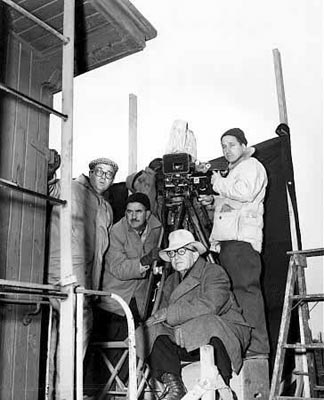
 Soon afterward, they get a ride with a friendly young man named Oreste, who is part of a travelling theatre troupe. He feeds the children and shows them his costumes, and Angelopoulos is clearly establishing him as a surrogate father figure.
Soon afterward, they get a ride with a friendly young man named Oreste, who is part of a travelling theatre troupe. He feeds the children and shows them his costumes, and Angelopoulos is clearly establishing him as a surrogate father figure.
 We now come to a surreal scene, which is the most memorable in the film. As Oreste sits on a dock, a gigantic stone hand starts to rise up out for the water. We begin to hear the sounds of a helicopter, and when the camera goes back to the statue, it is attached by cable to the helicopter. It rises out of the water, and is carried away. This scene makes no sense from a literal standpoint, as the hand rises by itself, and the chopper seems to magically become hooked to it after the fact. So what does it mean? The image, I think, is meant to indicate the loss of love and companionship. The sight of the hand drifting away is a dream-like wave goodbye, and we later see this motif repeated when they say goodbye to Oreste on a deserted highway.
We now come to a surreal scene, which is the most memorable in the film. As Oreste sits on a dock, a gigantic stone hand starts to rise up out for the water. We begin to hear the sounds of a helicopter, and when the camera goes back to the statue, it is attached by cable to the helicopter. It rises out of the water, and is carried away. This scene makes no sense from a literal standpoint, as the hand rises by itself, and the chopper seems to magically become hooked to it after the fact. So what does it mean? The image, I think, is meant to indicate the loss of love and companionship. The sight of the hand drifting away is a dream-like wave goodbye, and we later see this motif repeated when they say goodbye to Oreste on a deserted highway.

